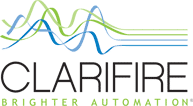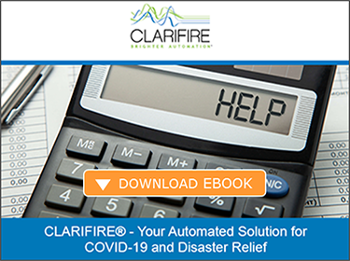Keeping track of which investor wants what during the forbearance, loss mitigation, and loan modification processes has never been an easy activity. Throwing in the COVID-19 pandemic with its massive unemployment numbers and staggering amount of borrowers in need has been enough to make everyone’s head spin. Technology plays a huge role in helping default servicing organizations address forbearance agreement challenges, how bankruptcy affects the proceeds, and the tackling of operational challenges related to new logic and volume, all while mitigating servicer risk.

Tracking Hardships
The Coronavirus Aid, Relief, and Economic Security (CARES) Act provides forbearance options for borrowers impacted by COVID-19. Even those who have filed bankruptcy proceedings can find relief. The process starts when a borrower makes a hardship request. It is important for everyone to understand that with tracking hardships, we are all in uncharted waters. As we go through these complexities together, workflow technology provides the safety net of data elements that prove receipt of the request.
For large servicers, technology can process these requests in bulk with self-service options for borrowers. With two clicks, the borrowers get their letter of approval. Next, internal servicing operations receives the request having no interaction with the borrower. Yet, there is a full audit trail, and both parties have all the information they need – completely automated. Servicers can see the letter went out with the necessary forbearance info - what it means, who to contact, and what the impact looks like over the next 18 months.
Because the rate of change occurred with such volume and velocity last year, many servicing organizations were scrambling. The need to comply with new legal parameters and confirming operational processes were in place while making it easy for the borrower to contact them made it difficult for servicers to manage forbearance requests. Situations like this make technology necessary to track hardship assertions. Servicers have visibility into how many times the borrower has been in forbearance and how many times they have made his type of request. Retaining a complete history of a borrower’s loss mitigation efforts protects the organization and makes it audit-proof. Servicers can confirm the borrower asked for the forbearance, see where the case is, and whether it has been confirmed. They have the ability to monitor if the debtor or trustee is making payments. Extensions remain a requirement to request, but the technology does all the work by sending extension approval letters based on the elements that are clicked within the workflow. Those stops, extensions, and history of audits are critical for risk aversion and error management.
Proof of Claim (POC)
With Proof of Claim, servicers must have the proper due diligence from a documentation standpoint. Attorneys need to know if borrowers are delinquent due to COVID-19. Servicers can use workflow tags within the technology to call out for specifics related to those impacted by COVID-19 – or not. The visibility makes it clear to everyone touching those loans which path they move down. COVID-19 paths are similar to those followed by a disaster victim. You tag those different paths so you know how to behave.
A best operational practice is to marry your technology with quality assurance. Workflow technology allows additional rules to be applied and sends impacted loans to a different team for review. This is necessary because servicers now have different numbers and ways of filing these POCs or have different jurisdictions. Additional rules and the decisioning down to your jurisdictional rules are important items for tracking accurately.
Motions for Relief (MFR)
What happens to MFRs if default occurs in bankruptcy? The best approach is to reach out to the debtor’s counsel. Servicers must include full disclosure in MFR to state specifics. For example, it is important to let the court know if the debtor was in relief previously, but the period has ended. The tracking of various payments for this situation must be documented correctly; payments such as the arrears, pre-petition, ongoing payments, and trustee for default posting payments. Most servicers write back to other systems of record. In any regard, you must make sure yours keeps up with any changes in accordance with forbearances. It becomes a delicate formula of operational and QA processes added to the complexity of data tagging post-forbearance to make sure the accounting is right. Auditing is essential here, especially without the right technology. You cannot blindly rely on your system of record if it isn’t tagged. Tracking this can be confusing as you approach notice of files or once the bankruptcy is done. Reconciliation must happen regularly. When any discrepancies in accounting show up in court, the judge’s tolerance typically drops to zero. It is critical to have notes filed, reconciliations completed, and in order. Keeping up is difficult without the right innovation to do the heavy lifting.
Loan Modifications
Right now, we are seeing an encouraging trend of borrowers requesting loan modifications. Only time will tell how this shakes out over the next few months. Servicers need to make it easy for borrowers to request a loan modification. Over the last year, loan mods have become more accessible than they use to be. Many no longer require documents. It is necessary to understand the different nuances between FHA versus USDA or Fannie and Freddie requirement differences. Servicers must take a look at their internal processes. Is it easy for everyone to view what each investor requires and what path to follow? Last year investors said they needed certain documents. This year, that list is smaller. Workflow automation can execute loan mods in a matter of minutes because those nuances are mapped for each investor. The right technology enables servicers to embed rules in the technology much more rapidly and effectively. In addition, the customer receives the information and automated letters explaining the process, so everyone is on the same page.
CLARIFIRE® for Loss Mitigation is Brighter Automation.
We pioneered workflow automation to support servicers during the Great Recession. That same innovation is elevated and delivers servicers with safety nets necessary to keep up with industry changes.
CLARIFIRE technology is proven workflow automation that supports organizations to ensure all communications, processes, and workout plans are automated and improved. Servicers receive instant access to automated decisioning with embedded time frames, workout rules, calculations, and workflow distribution. CLARIFIRE delivers configurable workflow that streamlines work. What used to take hours of manual, brute force is now complete in minutes. As importantly, necessary safety nets keep servicers compliant and auditable.
Find out how to navigate the future effectively and manage volume and velocity at your fingertips. Contact us directly at 866.222.3370 or visit us at eClarifire.com.
Read these blogs and articles next



